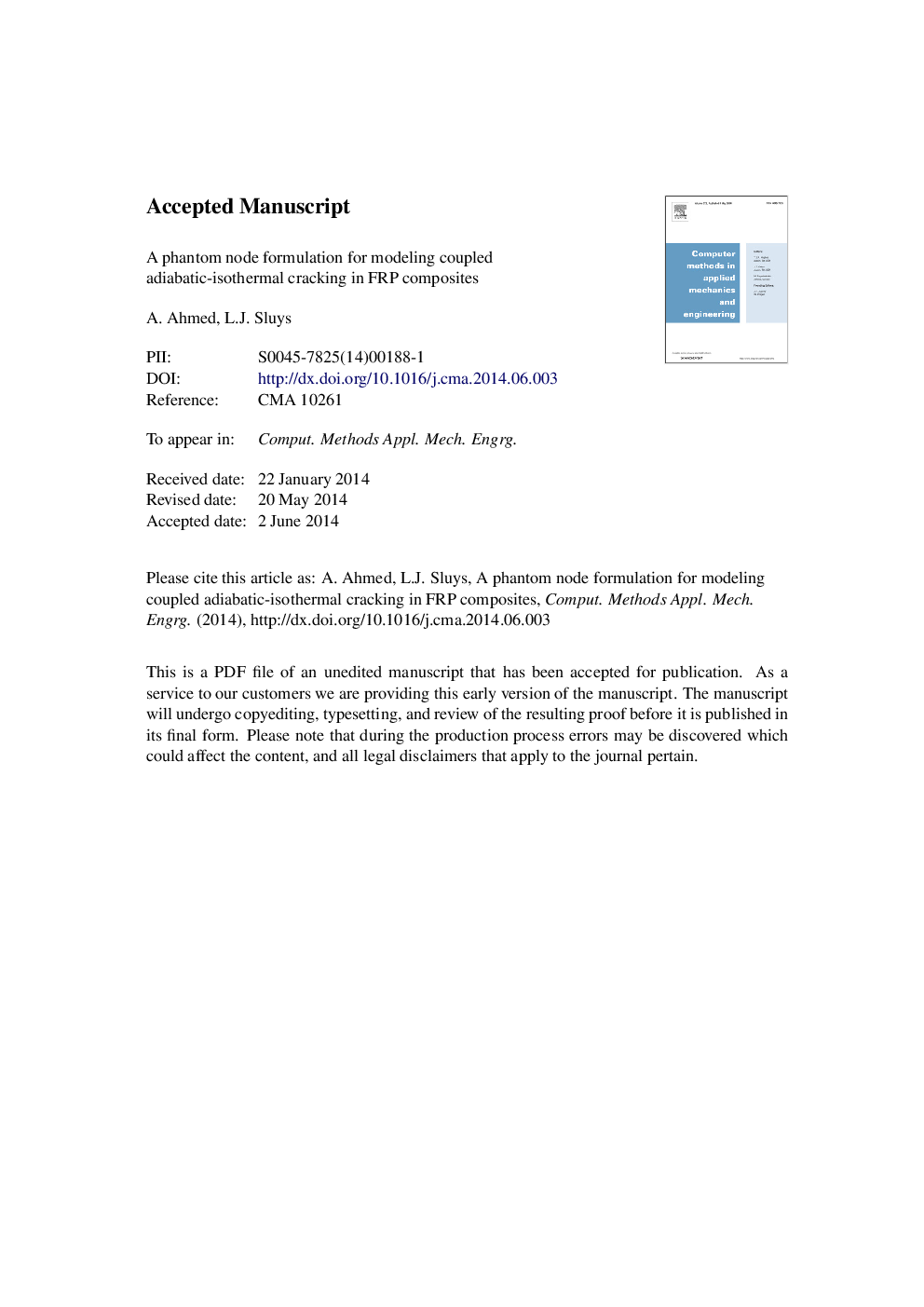| Article ID | Journal | Published Year | Pages | File Type |
|---|---|---|---|---|
| 6917578 | Computer Methods in Applied Mechanics and Engineering | 2014 | 54 Pages |
Abstract
A finite element approach to model thermo-mechanical cracking in fiber reinforced composites is proposed. A phantom-node method is used to allow for the modeling of discontinuities in the displacement, temperature and heat flux fields. This allows for modeling of adiabatic as well as isothermal cracks, propagating arbitrarily through the finite element mesh. The simultaneous modeling of heat transfer through an interface and heat generation during fracture is achieved by coupling the equation of motion to the energy equation, accounting for the effects of cohesive interfaces, friction, inertia and heat conduction. A mixed-mode cohesive interface law coupled with a constitutive law for contact friction between crack flanks is used for an accurate representation of interface phenomena. Numerical results are presented to demonstrate salient features of the model. The model is validated against analytical and experimental results.
Related Topics
Physical Sciences and Engineering
Computer Science
Computer Science Applications
Authors
A. Ahmed, L.J. Sluys,
